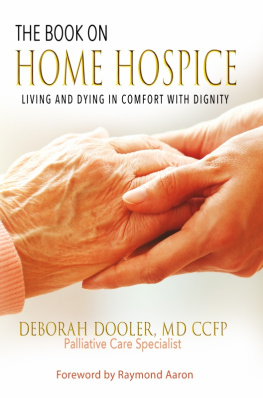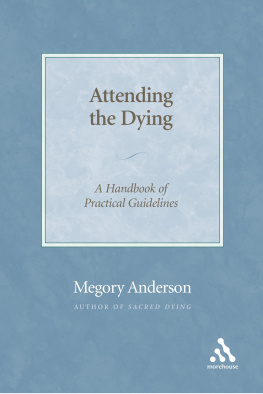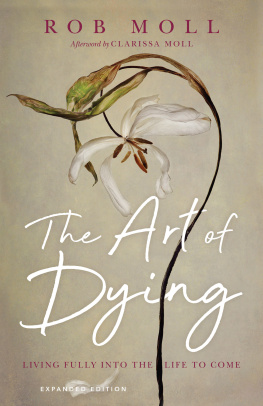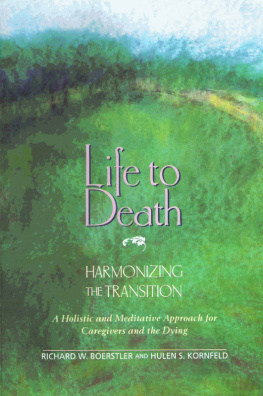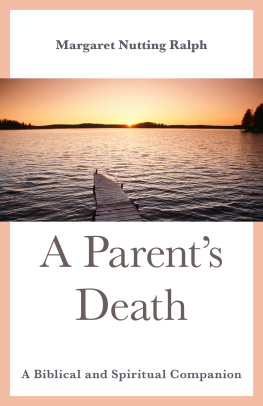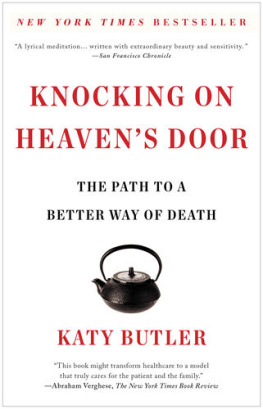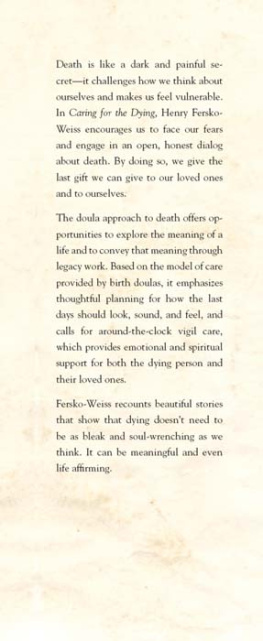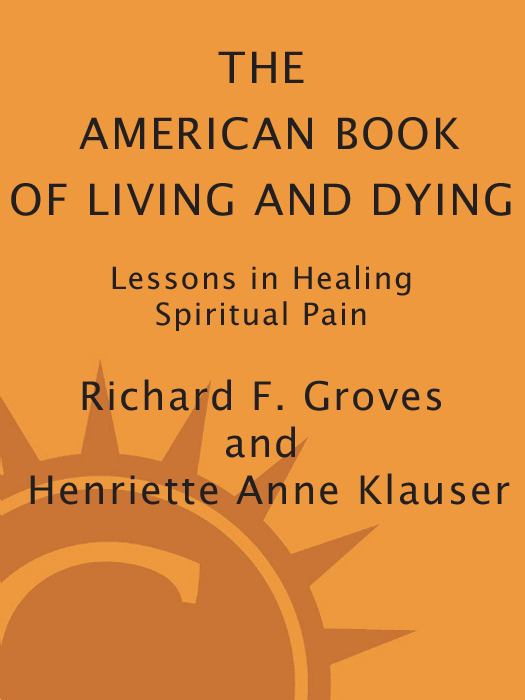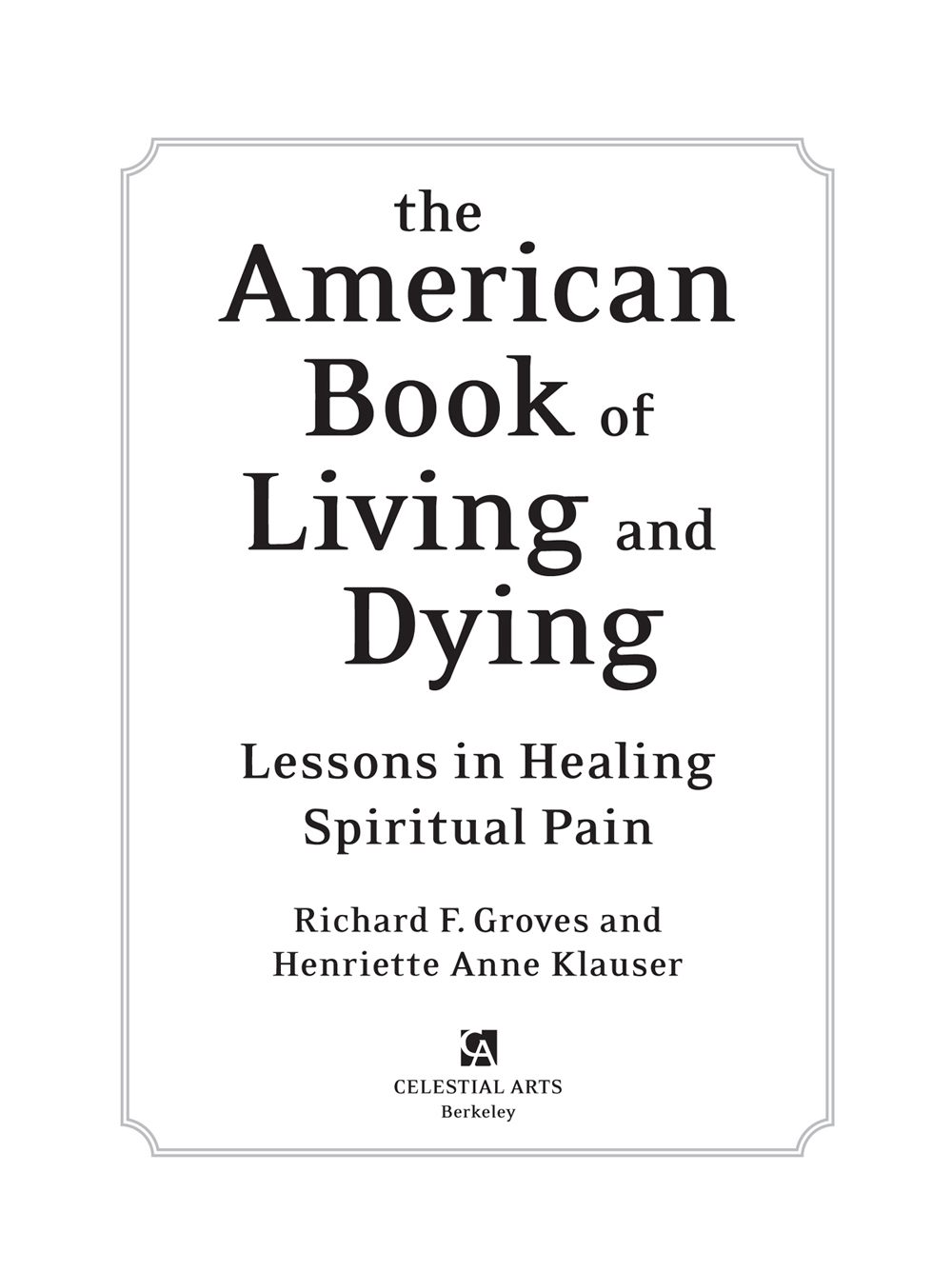Contents
Copyright 2009, 2005 by Richard F. Groves and Henriette Anne Klauser
Illustration copyright 2005 by James Klauser, Bullseye Graphics
Originally published in hardcover as The American Book of Dying in the United States by Celestial Arts, Berkeley, in 2005.
All rights reserved.
Published in the United States by Celestial Arts, an imprint of the Crown Publishing Group, a division of Random House, Inc., New York.
www.crownpublishing.com
www.tenspeed.com
Celestial Arts and the Celestial Arts colophon are registered trademarks of Random House, Inc.
Library of Congress Cataloging-in-Publication Data is on file with the publisher.
ISBN9781587613500
eBook ISBN9780399578410
v4.1
a
For Mary. The greatest gift God has given me is your love. You are the life and soul of this work.
Richard
To Nancy, my soul friend, my lifelong anamcara.
Henriette Anne
contents
Annie: the Perfectionist
Will you love me even if I get it wrong?
Henry: the Helper
Will you love me even if I cant love you back?
Sara: the Achiever
Will you love me even if I am not successful?
Heather: the Dreamer
Will you love me even if you know who I am?
Park: the Thinker
Will you love me even if I lose everything in life?
Maria Elena: the Loyalist
Will you love me even if I break the rules?
Andrew: the Adventurer
Will you love me even if I cry?
Dorothy: the Asserter
Will you love me even if I am weak?
Larry: the Peacemaker
Will you love me even if I disagree with you?
Preface to the Paperback Edition
Great Suffering, Great Love
S ince its publication in 2005, The American Book of Dying has had a profound impact on caregivers and care receivers around the worldfar beyond North American audiences. What began as a guide to end-of-life care and a series of real-life stories about healing through suffering has evolved into a worldwide training and education network. Thousands of hospice workers, health care professionals, members of diverse faith-based communities, and the general public have been introduced to the vocabulary of diagnosing and responding to spiritual pain. From Japan, Thailand, and India to Ireland, Austria, and Australia, The American Book of Dying has opened windows of insight into the universal nature of spiritual suffering and healing. In Canada and the United States, teachings about the sacred art of living and dying are now featured in many maximumsecurity prisons, high school classrooms, programs for the elderly, schools of medicine, and seminaries of all denominations.
You might have noticed that the title of this paperback edition has an important addition: the word living has been included, so the title now reads, The American Book of Living and Dying. This is no small change. No one should wait until the end of life to consider what lies at the foundation of spiritual health and suffering. The souls yearning and quest for meaning, forgiveness, hope, and healthy relationships measure the quality of every stage of life, and are not just concerns that surface during lifes final stage. The stories in this book have a timeless quality and apply to both the living and the dying, transcending age, race, and gender. No ones life is immune from the painful challenges of death and loss. The gift, however, is that we can find meaning and consolation in this darkness.
Now I have to include my own personal story in these pages. Since The American Book of Dying first came out, Mary, my wife of nearly twenty years, has died of cancer. Neither the lessons in this book, nor the stories of others, nor a lifetime of working with the terminally ill make it any easier to continue living without my beloved Mary. There is no bypass through the valley of the shadow of death.
Mary came into my life like a beautiful breeze. With a unique, authentic presence and a remarkable, gentle love, she lit up the dark and lonely spaces in my world and in the lives of many others. It is a strange and incomprehensible thing to lose my spouse, my workmate, and my anamcarasoul friendall at the same time. But my experiences with the dying and their loved ones have taught me an important lesson: people can share a deep connection that transcends physical boundaries and outlives physical form. Ive realized that Mary and I are joined by a rare marriage of spirits that continues to be life-giving even after death.
Death is a season that takes away everything that seems sure and consoling. However, Marys death has also opened my heart to new and previously unimagined ways of living. Rather than merely hope that consciousness survives physical death, Ive come to embrace Marys intangible presence, which I feel almost every day. Im not an especially contemplative person by nature, but when I take the time to listen to the quiet voice within, I know that Mary is as real now as the day we met. I miss her terribly, but I also realize that it was her anam (soul) that I first fell in love with. This new and real presence is becoming deeper by the day. And because there is so much love for me on the other side now, death is no longer a fearful fate.
Every ancient book of living and dying views life and death as a continuum, as an unbroken cycle. If we choose to take on the role of anamcara, the journey of our relationship with a loved one does not end with his or her last breath. In fact, we are forever intertwined; they become a part of our existence, and we become a part of theirs. T. S. Eliot, in Four Quartets, describes it this way: We die with the dying: / See, they depart, and we go with them. / We are born with the dead: / See, they return, and bring us with them. Life goes on and isparadoxicallyenhanced by death. And if we can find love and reaffirmed connection in our suffering, we need not fear that lifes greatest pains can destroy us.
Richard Groves
June 2009
Introduction
T oday will be an ordinary day for most. The sun will rise and set on familiar work and relationships. But for some of our relatives and neighbors, today will not be ordinary. For them, life as they have known it will come to an end. Today they will die.
Since you opened this book, 10 persons have died worldwide, on the average of 1.76 persons per second, to be precise. For every 1,000 persons alive today, 8 will die within the next year. If you live in a midsize American town, that means an average of 3.5 deaths per day. In metropolitan areas the size of Boston, Denver, and Seattle, the daily mortality rate rises to almost 40 persons.
Most people have some warning about impending death. In North America, accidental or sudden catastrophic illness accounts for only about 20 percent of all fatalities80 percent of Americans die in bed. The majority of us will die a natural death due to long-term disease or the aging process. That means we are far more likely than our ancestors to have ample time to prepare for our own death and the deaths of those we love.



